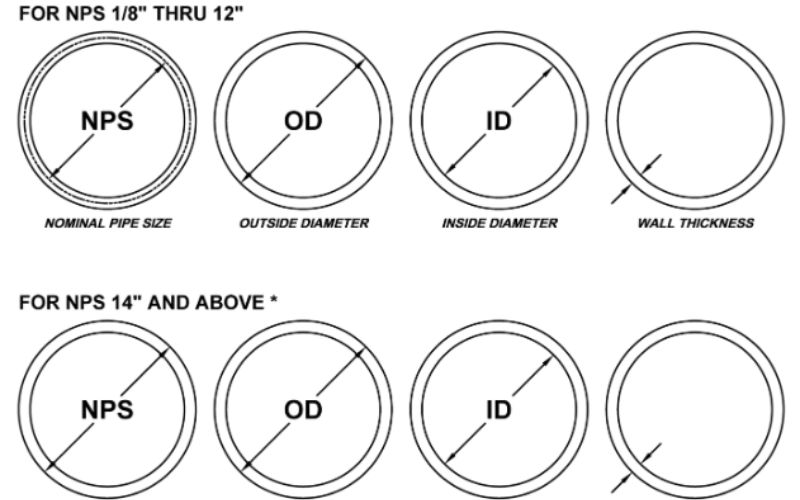Products made of brass, like a trophy, can serve as an example of an award or an award aiding to build a specific characteristic. It has unique benefits and weaknesses while creating a firm mixture with bronze. This article covers the various characteristics of brass, its advantages and disadvantages about other relevant materials, and how the material is used whilst further exploring in detail why it is so successful and what is likely to happen in the future. Whether you solely find the nature of materials interesting or work in the industry, this article will cover useful information from numerous aspects.
What is Brass?
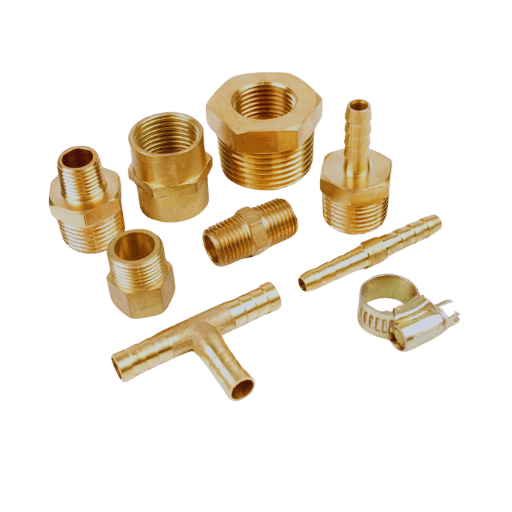
Brass is an alloy that consists mostly of copper and zinc. The relative amounts of both metals may vary, hence several types of brass with different characterisitics can be created. Brass is tough, malleable, and does not corrode easily, all of which contributes to its wide application in industry as well as arts and crafts. Its appealing golden luster adds to its use in jewelry, decoration and other designed objects.
Brass is an Alloy of Copper and Zinc
An alloy of zinc and copper makes brass. The proportions of each constituent can be modified so that strength, resistance to corrosion, and color modification can occur. Its versatility makes brass useful in many areas like plumbing, electrical devices, decor, and even in some musical instruments.
How Brass is Made
Copper and zinc are melted over a controlled mixture process for the production of brass alloys, which can achieve the desired compositions. The procedure begins with the procurement of high-purity raw materials such as copper and zinc. The furnace burns at a temperature of over two thousand degrees Fahrenheit where these metals are melted together. Depending on the purpose, other elements may be added to improve characteristics such as machinability, strength, or corrosion resistance. These may include lead, tin, or aluminum.
To form various geometries, molten brass is cast into desired shapes and poured into prepared molds once the metals have combined fully to form a homogeneous mixture. The material goes through additional processes after casting, like hot or cold rolling, extrusion, and forging to obtain the required surface finishes and dimensions. Brass is also capable of being annealed—a heat treatment procedure that improves ductility—along with internal stresses caused during manufacturing.
The variety of intended uses gives room for differing the composition of brass. For instance, “yellow brass” is composed of 67% copper and 33% zinc, whereas “red brass” tends to have more than 80% copper. As such, the nominal copper content in brass varies from 55% to 95% depending on the alloy. These ratios are controlled by manufacturers to satisfy the alloy’s mechanical and chemical needs for specific regulated industry branches.
Throughout production, strict monitoring of quality alongside laboratory tests like spectrometry assure the chemical makeup and physical attributes of the completed alloy. The goal is to verify compliance with industrial standards and guarantee that the brass functions optimally in its intended use.
Brass vs. Bronze: Differences Explained
Brass and bronze are both alloys that contain copper, however, their compositions, properties and uses are quite different. Brass is a combination of copper and zinc, while bronze is primarily composed of copper and tin along with added elements such as aluminum, manganese or phosphorus for additional specific traits.
Brass is prized for its malleability and ductility which makes it suitable for intricate designs as well as crafting musical instruments. Components that require brisk precision machining are easily cut from brass. Its zinc content can be changed to improve other factors like strength and corrosion resistance. Bronze has a reputation for generally having higher strength, along with greater resistance to wear, corrosion, and marine environments, making it an ideal candidate for ship propellers and bearings.
From a cosmetic perspective, bronze tends to have a reddish-brown hue which is darker than brass’s golden-yellow shade, this shade allows pronounced decorative usage. Brass also retains its luster while bronze obtains a protective green patina over time because of oxidation. When it comes to thermal and electrical conductivity, bronze performs slightly better, especially when the alloy composition is optimal.
Brass is used extensively in industry for plumbing, electrical connectors, and architectural finishes because it is easily fabricated. Due to its strength and abrasive wear resistance, bronze is favored for heavy-duty applications like bushings, gears, and military-grade equipment.
Knowing these differences is very important in the case of selecting a material for engineering, manufacturing, or designing. Looking into mechanical performance, environmental conditions, and required aesthetic features ensures the right alloy is selected for ideal performance.
Exploring the Properties of Brass
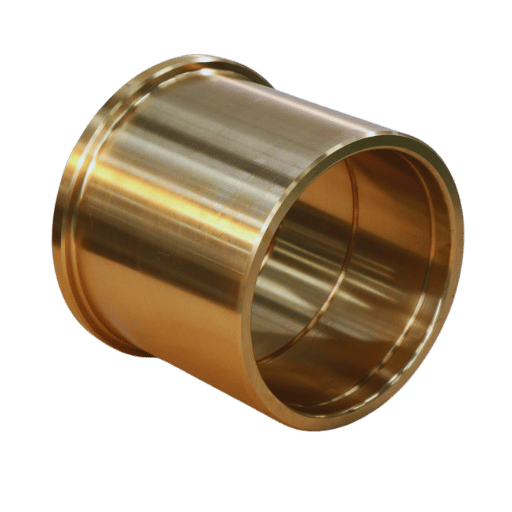
Physical and Chemical Properties of Brass
Copper and zinc are used in varying proportions to create brass tailored for specific performance characteristics. Its numerous applications stem from its well-balanced physical and chemical attributes.
Density and Weight
With regards to composition, the density of brass falls between 8.4 and 8.7 g/cm cubed; this value is considered high when compared to other materials. This gives brass durability while resisting deformation under stressful circumstances.
Melting Point
As it relates to the zinc-to-copper ratio, the melting point of brass is relatively low when compared to copper and steel, resting lower than 900 °C and upper than 940 °C (1652°F – 1724°F). This is advantageous for manufacturing due to the ease of casting and shaping.
Electrical and Thermal Conductivity
Brass is useful in the construction of components that require heat transfer due to its excellent thermal conductivity which falls within the value of 109 W/m·K and 134 W/m·K. Its electrical conductivity measuring in at 28% – 37% of copper further enhances its use in electronic fittings.
Corrosion Resistance
Brass is known to have natural corrosion resistance phenomenon as one of its distinguishing chemical properties. The copper component of brass will react with the oxygen in the atmosphere forming a protective layer, such as a patina, which inhibits further deterioration. These properties make brass trustworthy in the sea and outdoors.
Machinability and Workability
Brass has a credibility of having high machinability with some machinability ratings reaching over 90%. This ensures ease of cutting, drilling and forming which subsequently minimizes tool wear during fabricating operations. Even so, variants such as free-cutting brass are produced for this purpose by free addition of a few percent of lead.
Tensile Strength and Ductility
With regards to tensile strength, brass alloys have a tensile strength within the approximate bracket of 200 MPa to 600 MPa, depending on the specific composition and the mechanical treatments applied. Furthermore, its ductility enables it to be drawn into wires and rolled as sheet metal while maintaining its structural integrity.
Chemical Composition and Reactivity
Brass is composed of Zinc and copper, and its concentration has significant effects on the strength, appearance, and resistance of brash. Because Chemicals and Bases are quite unreactive to bronze, it will, however, be attacked by dezincification situationally during exposure to ammonia or chlorine.
These traits together enable brass to be used extensively in plumbing, architecture, electronics, and even the decorative arts. Its unique combination of strength and aesthetic appeal guarantees its relevance in traditional and modern applications, along with versatility.
Brass’s Corrosion Resistance
Brass is moderately resistant to corrosion in many situations, which allows its use in both indoor and outdoor applications. It does not tarnish easily because a protective oxide layer is formed on its surface. Its main weakness lies in environments zealous in chlorine, ammonia, or seawater, as they tend to promote dezincification corrosion, weakening the material over time. To improve corrosion resistance, adding elements such as tin or even making the alloy’s zinc content lower is a good option. Taking into account the proper care and environmental control aids in extending the lifespan of the brass parts.
Unique Properties That Make Brass Useful
The suitability of brass across various sectors stems from how it integrates numerous remarkable features because it is a versatile alloy. Furthermore, one of its unique features is its outstanding machinability, which is because of its low melting point and malleability. This quality enables the easy shaping of brass into complex components and intricate designs, thus making it appropriate for precision parts, fittings, and decorative hardware.
Brass offers superior acoustic properties and diverse versatility which makes it the preferred choice for construction of musical instruments such as trumpets, trombones, and saxophones. Furthermore, the ability of the alloy to vibrate and produce warm resonant sounds is accentuated.
Brass has been proven to have inherent antimicrobial properties whereby it has the ability of killing or considerably slowing down the growth of harmful bacteria in just a few hours. This makes brass useful in places like healthcare facilities where curbing microbial transmission is essential.
Its extensive thermal and electrical conductivity makes it suitable for use in electrical connectors, heat exchangers, plumbing components, and even appliances. Moreover, the tensile strengths of brass alloys ranging between 210 MPa to over 600 MPa depending on their composition confirms the reliability of brass under mechanical stress.
Together, these properties accentuate the functional as well aesthetic versatility of brass, which continues to be of great use in construction, healthcare, automotive, and musical sectors.
Diverse Types of Brass and Their Uses
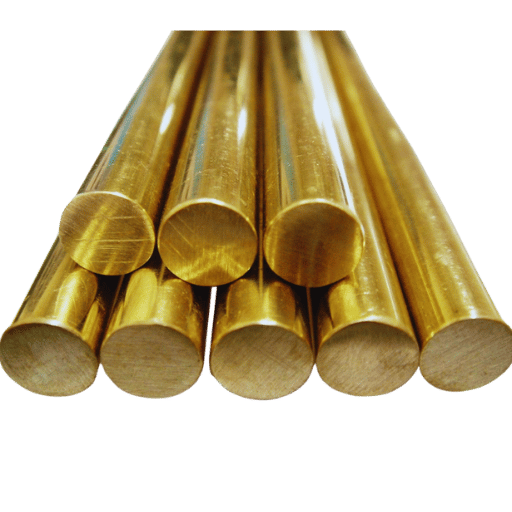
Understanding Alpha Brass and Beta Brass
Their crystal structure and zinc content differentiate alpha brass and beta brass. Alpha brass has a zinc content of less than 35%, which grants it remarkable corrosion resistance, malleability, and ease of machining for use in fittings and decorative parts. On the other hand, beta brass has a higher zinc content, usually between 35% and 45%. It is tougher and stronger, used in applications needing more strength, such as valves and durable hardware. Each type is custom-designed to address particular industrial and functional needs.
Common Brass Types: Red Brass and Yellow Brass
Used in industrial work as well as plumbing and marine hardware due to its durability, red brass (commonly referred to as gunmetal) contains 85% copper, which provides high resistance to corrosion. This makes it reddish and suitable for numerous plumbing applications. Alternatively, yellow brass is much lower in copper (about 60-70%) but has higher quantities of zinc, providing it a shiny gold color. This variation is often utilized in manufacturing musical instruments and for other decorative purposes due to its strength and workability.
Uses of Naval Brass
The composition of naval brass contains 60% copper, 39% zinc, and a small addition of tin (around 1%), which improves resistance to dezincification and corrosion, especially in marine environments. Some of its applications include:
- Marine Hardware: It is widely used in shipbuilding for propeller shafts, turnbuckles and bolts because of its great seawater corrosion resistance.
- Heat Exchangers and Condensers: Ideal for the tubes and parts necessary for saltwater cooling systems due to their strength and the performance needed.
- Industrial Machinery: Used in the production of parts for machinery that are highly corrosive to protect the equipment’s structure.
- Seawater Pump Components: Selected for continual saltwater exposure without significant degradation.
Applications of Free Machining Brass
Free machining brass, or sabra ss alloyed with lead, which is referred to as C36000, is tailored for high machinability and is thus preferred for complex machining operations. Its applications include:
- Precision Components: Widely utilized in the production of numerous fittings, valves, and an array of fasteners where precision and effortless machining is key.
- Electrical Connectors: A must in the electrical sector because of its high conductivity and dimensional stability.
- Automotive Components: Commonly used for several carburetor parts and connectors in the fuel system because of its strength and the ease of machining.
- Watch and Clock Components: Gears and other fine mechanisms are made highly precise with this alloy because of its uniform ease of cutting and polishing.
Both alloys are highly regarded for their tailored properties that meet specific needs in challenging environments.
The Characteristics of Brass as a Manufacturing Material
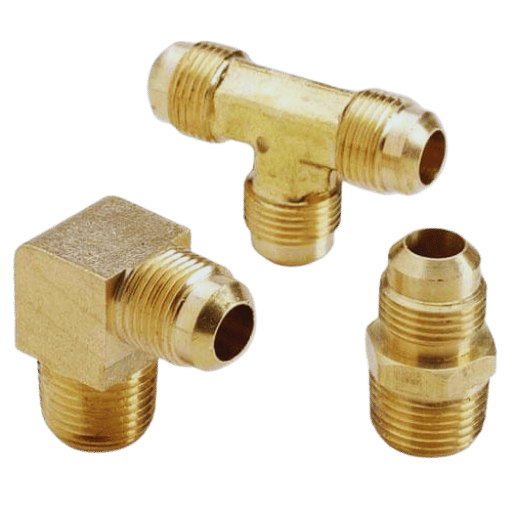
Brass’s Malleability and Workability
Brass is iconic for its pronounced malleability and workability, which serves as an exceptional aid for myriad manufacturing processes. It is primarily composed of an alloy of zinc and copper, and its composition can be changed to improve these properties for specific applications. Brass can be pressed and extended without breaking, which surpasses the malleability of many other metals. This makes it easier to create complex design assemblies like decorative parts or intricate fittings.
Brass alloys retain remarkable tensile strength while exhibiting ductility. Data shows that tensile strengths fall between 200 MPa to over 700 MPa depending on the alloy and temper, which improves the capabilities of the alloy. In addition, the ability of the cold and hot working processes further ensures versatility in manufacturing like stamping, rolling, extruding, and machining. The low coefficient of friction also improves the machinability of the metal and its ability to be finely and precisely detailed.
These features alongside the ease with which brass can be soldered and brazed highlight it’s advantages as a materials for manufacturing when precision and appealing aesthetics are essential. Developed metallurgical techniques widens the possibilities for how brass can be used in priducts tailored for specific consumers, including specialized industrial goods.
Machinability and Conductivity in Brass
Brass is regarded as one of the most machined metals due to its low resistance when cut and high conductivity. This is due to the usefulness of this alloy in various industries. The unique metallurgical composition of brass, consisting of copper, zinc, and other optional lead enhancers, is what allows for easy machining. The presence of free machinable brass alloys like C36000 (essentially free-cutting brass), which possess the highest surgical machining efficiency of 100%, are fundamental for brass attaining benchmark metrics in comparitive machining exercises. The tested material’s fast machining rating alongside low tool erosion autonomy allows for brass to be processed efficiently in industrial applications.
The predominance of copper enables brass to have exceptional thermal and electrical properties, ensuring solid performance scores in thermal and electrical conductivity tests. Tests show that the constituent makeup of brass greatly affects the electrical conductivity of the alloy, allowing it to range between 23% and 44% IACS (International Annealed Copper Standard). This makes brass a strong competitor and industries’ primary metal of choice for electric partner devices like connectors, terminals, and exchangers. Added to the already mentioned benefits, the power of brass against corrosive forces helps protect and spare industrial and consumer devices, prolong assured operation. Along with continuous modification of alloy brass is evolving to be even more adjustable and efficient for engineering and technical purposes.
The Role of Zinc Content in Brass’s Properties
The concentration of zinc is a critical factor that determines the mechanical and chemical properties of brass. As a rule, brass is an alloy consisting of copper and zinc, where the amount of zinc is between 5 percent and 40 percent. With some industrial engineering purposes, the varying amounts of zinc make the material stronger, harder, more ductile, and resistant to corrosion.
“Low-zinc brasses,” which have lower amounts of zinc, are more resistant to corrosion and easier to machine. Alloys containing roughly 15 percent zinc are utilized in places that require great formability and resistance to seawater. High-zinc brasses, ranging from 30 to 40 percent zinc, are much harder and have greater tensile strength. Such alloys are great for more demanding applications like high-performance fittings and fasteners.
In general, adding more zinc decreases the price of the alloy, as well as enhances wear resistance and strength. In some cases, however, increasing the zinc concentration past 40 percent may make the alloy lose some ductility, rendering it less workable in certain fabrication processes. Understanding this balance is essential for choosing the right brass alloy for specific applications.
The ability to control zinc concentrations during the manufacturing processes, along with improved metallurgical practices, means that engineers can design brass alloys specifically tailored to the requirements of contemporary industries. This is why the electrical, marine, and automotive industries which expect high standards of performance and dependability, among others, rely heavily on brass. Moreover, the recyclability of brass adds to its sustainability for prolonged use.
How Brass is Made and Used in Various Industries

The Production of Brass: From Sheet to Finished Product
Brass production starts with the careful proportioning of its main components, copper and zinc, alongside smaller quantities of other metals, such as lead, tin, or aluminum, that may improve certain characteristics. The copper and zinc alloys are poured into furnaces that operate at extremely high temperatures, Molten metals- the brass alloy, to be specific- are then cast into large billets or slabs that will later become his ‘workpieces’ in further processes.
Multiple operations can be performed to transform these workpieces, amongst them, one of the most popular is hot rolling, which involves heating the slabs and rolling them out into sheets of certain thicknesses. Here, annealing can be done between passes to make the material more ductile and relieve some internal stresses. Following these steps, the brass is cold rolled to increase the material’s final thickness, sharpen surfaces, and strengthen the part through work hardening. From these procedures, parts can be made to put the various industrial and commercial products together; cutting, stamping, and machining are done depending on what the final component is meant to be.
Brass is one of the most preferred materials used to manufacture electrical connectors, plumbing fixtures, automotive parts, and marine hardware, primarily due to its versatility and superior machinability. For instance, in the plumbing and sanitation sector, more than 85% of a brass component’s alloy is resistant to corrosion, and this is also due to the intrinsic properties of the alloy itself. Furthermore, its excellent brass conductivity is also utilized in industries where power loss of up to 30% in electric distribution systems is minimized through the use of brass connectors. Its capability to endure extreme environments gives dependability to products like marine propellers and ship fittings, withstanding hardship, temperature changes, and moisture, ensuring dependable performance. By upholding 90% of scrap brass, the methods of production are efficient and are beneficial for conserving energy and sustaining the environment.
Wide Range of Applications for Brass
Because of its long-lasting nature, resistance to corrosion, and exceptional machinability, brass is highly utilized across numerous industries. It is chiefly used in plumbing fixtures, electrical connectors, and musical instruments because it provides dependable and durable performance throughout use. Its appealing qualities further allow it to be used in architecture, ornamental structures, and decorative hardware. It is also widely used in marine applications because of its resistance to corrosion from saltwater, allowing for dependable performance.
Brass in Musical Instruments and Fittings
Brass is extensively utilized in the manufacture of musical instruments like trumpets, trombones, and tubas owing to its capability of yielding a bright and resonant sound. Its good malleability offers the precision needed to shape it into parts within the required measures, while its strength ensures longevity. For fixtures, brass is most often used since it has high corrosion resistance and strength, which make it fit for plumbing parts like valves and fasteners. All of these features make it the best choice in these two cases, function and efficiency working in synergistic harmony.
Frequently Asked Questions (FAQs)

Q: What is brass made of?
A: Brass is an alloy metal that is mostly composed of copper and zinc. These metals are adjustable in proportion which results in different types of brass, each with varying characteristics. Brass may also include small quantities of tin, lead, and iron to improve some of its features.
Q: What are the physical properties of brass?
A: Brass has a yellowish-golden coloration, possesses good corrosion resistance, excellent machinability, and a distinctive feature of low melting point in comparison to every other metal alloy. Low melting point not only leads to easy production but also makes it very easy to shape the product, and combine with other materials which is an essential requirement in the brass industry.
Q: How is brass alloy produced?
A: Brass production requires the melting of copper and zinc in a furnace to get liquid metal as a output. The temperature of the molten brass is tightly controlled so that the mechanical properties and the characterisitics are in the alloy as desired. After cooling, the molten metal is set to slush and then poured into molds to obtaine a variety of products like brass sheets/bars.
Q: What are the characteristics of the alloy in brass?
A: Brass main attributes encompasses its alloy’s resistance to tarnishing, its ease of casting, as well as its polishability. As with any brass alloy, tarnishing is brass’ weakest point, however, it is generally accepted that brass does not lose its aesthetic attributes over time.
Q: What are some common applications of brass?
A: As noted above, brass possesses features that make it easy to work with and polish, thus, the primary strategic applications of the alloy were focused around architecture and in the creation of household and everyday utility items. Musicians can enjoy a range of brass formations owing to the availability of trumpets, saxophones, and other sophisticated instruments designed to fulfill the needs of accomplished music artistes.
Q: What Are the Advantages of Using Brass in Manufacturing?
A: Manufacturing processes are aided by using brass in several ways. The machinability of the brass alloy, together with its resistance to corrosion and good thermal and electrical conductivity, makes brass an exceptional option for a variety of products, including fittings, fasteners, and precision instruments.
Q: In what aspects does brass outperform bronze, and how does its microstructure influence its applications?
A: Although brass and bronze will always be regarded as two copper-based alloys, their composition differentiates them. Brass boasts zinc, whereas tin consigned to bronze. It is most commonly used in the form of musical instruments and decorations due to its non-tarnishing qualities and acoustic characteristics. Bronze is famed for its strength and wear resistance, which makes it ideal for use in bearings, bushings, and other heavy-duty applications.
Q: What factors affect the grade of brass?
A: For instance, the type of brass is predicated on how much copper and zinc are present as well as other alloying elements such as tin or lead. Different types of brass are tailored for functions with specific mechanical attributes like higher strength or corrosion resistance. This is majorly intended to cater for the diverse demands of several industries.
Q: In what forms is brass typically available?
A: Several types exist, for instance, there are brass sheets, rods, braids, and even tubes or wires. Such forms aid in effortless processing into innumerable items. This assortment of brass is helpful in carrying out various operations from building to artistic undertakings.
Reference Sources
1. Analisis Sifat Mekanik, Mikrostruktur, serta Formabilitas Deep Drawing CuZn35 Paduan Muntxber Kongo yang Telah Dianil Secara Berurutan (2023) (Widyastuti et.al, 2029, hal 31-37)
- Metodologi: Penelitian ini menganalisis paduan kun dan seng CuZn35 bratnya diatas berbagai suhu serta waktu untuk memperoleh sifat mekaniknya yang sesuai dengan aplikasinya sebagai kartrid. Struktur mikro, kekerasan, prosentasi kekuatan tarik, dan formabilitas deep drawing diukur dan dianalisis.
- Penemuan Utama: Proses anil kolom penyusu b Trensd Unbrass secara copper envelapping forging showed maked that ductualoge increase due to d B precipitation exiddenance whilst onthanish strength Creep Run Deformed copper alloy, sediment-deformijn sctinctury 2οινόνess.Treform dour lpatiafon steady-asvno cleavage gript stoveoot style fracture.
2. Effects of slag refining on microstructure and mechanical properties of brass CuZn39Pb2 (2021) (Jenek and Shlafka, 2021, pp. 2519–2525)
- Methodology: The scope of this study focused on evaluating the impact of slag refining on the structural and mechanical properties—specifically, hardness and strength—of the CuZn39Pb2 brass alloy. The microstructure, along with the chemical composition, was also studied.
- Key Findings: It was observed that refining the slag enhanced the mechanical properties and the uniformity within the brass ingot. It was also possible to ascertain the optimal flux concentration for obtaining maximum enhancement.
3. Structure and Properties of Electroerosion Powders Obtained from LS58-3 Brass Waste in Isopropyl Alcohol (2023) (Ageeva et al., 2023)
- Methodology: The electroerosion technique was utilized to obtain powders from LS58-3 brass waste in isopropyl alcohol. The resultant powders were characterized in terms of morphology, granulometric composition, elemental composition, and phase analysis.
- Key Findings: The electroerosion process yielded particles with predominately spherical and elliptical morphology, with an average diameter of 24 µm. Carbon was deposited on the particles’ surfaces due to isopropyl alcohol. Several phases were detected (Cu3Zn, Pb, ZnO, CuO2, SnO2).
4. Brass
5. Copper
6. Corrosion




